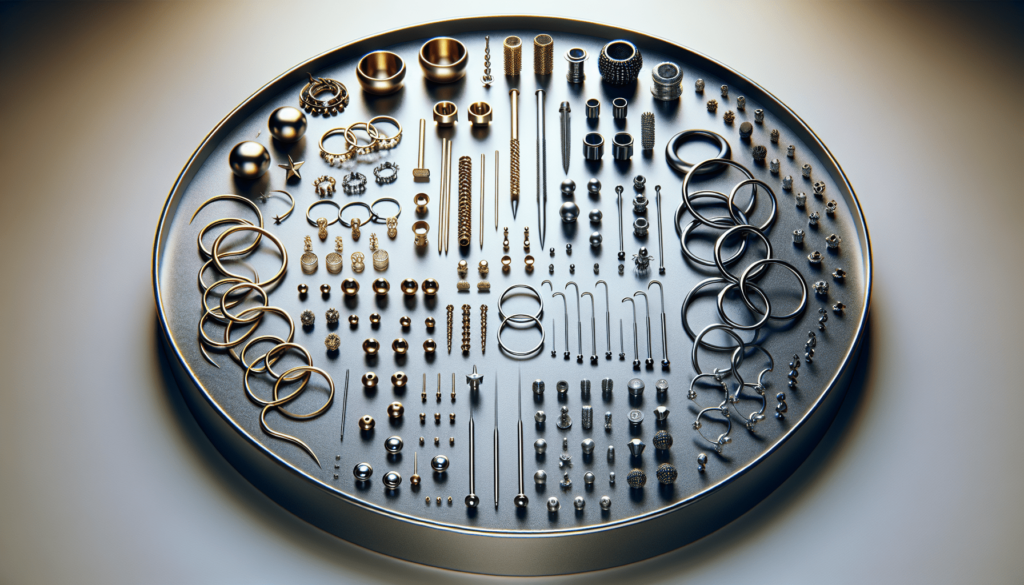Have you ever wondered about the best gauge size for your next ear piercing? It’s a question that often gets brushed off until you’re face-to-face with a piercer and have to make a quick decision. Knowing the right gauge can make all the difference in comfort, healing time, and how your piercing will look in the long run. Let’s make sense of it together and have you feeling confident and well-informed by the end of this discussion.

Understanding Gauge Sizes
What is Gauge?
When we talk about gauges, we’re referring to the thickness of the needle used to create the piercing hole in your earlobe or cartilage. Gauge sizes can sometimes seem confusing because they work in reverse—the lower the number, the thicker the needle. For example, a 14-gauge needle is thicker than a 16-gauge needle.
The Gauge System Explained
The gauge system itself is quite fascinating and hails from the world of wire and metalworking. It translates seamlessly into body jewelry, giving us a standardized way to measure and compare sizes. Here’s a quick reference table to give you a sense of the numbers involved:
| Gauge Size | Millimeters (Diameter) | Inches (Diameter) |
|---|---|---|
| 20 Gauge | 0.8 mm | 0.0315 in |
| 18 Gauge | 1.0 mm | 0.0394 in |
| 16 Gauge | 1.2 mm | 0.0472 in |
| 14 Gauge | 1.6 mm | 0.0625 in |
| 12 Gauge | 2.0 mm | 0.0787 in |
Understanding these measurements is essential for making an informed choice about your piercing.
Selecting the Right Gauge for Your Ear Piercing
Initial Piercing: Common Gauges
Most ear piercings, especially for first-timers, are done at a 20 or 18 gauge. These are thin enough to minimize pain and promote quick healing but still durable enough for everyday wear.
Gauges for Specialized Piercings
If you’re considering more specialized or expressive piercings, the gauge size changes slightly. For example, industrial and cartilage piercings often use a 16 or 14 gauge. That’s largely because these areas require a bit more structural support, and a thicker gauge provides just that.
Factors Influencing Your Choice
Personal Anatomy
Your unique ear structure plays a significant role in gauge selection. For example, someone with thicker earlobes might find a 20 gauge feels too tight, whereas someone with very thin lobes might prefer it. Always consult with a professional piercer who can offer real-time advice tailored to you.
Jewelry Preferences
A second consideration is the type of jewelry you plan to wear. If you’re fond of hanging earrings or hoops, a smaller gauge (like a 20 or 18) will suffice. However, for those who prefer plugs or tunnels, starting at a bigger gauge (like 14) could save you the trouble of stretching later.
The Healing Journey
Healing Time and Gauge Size
Healing is an essential factor to remember. Generally, the smaller the gauge, the quicker the healing process. A 20-gauge piercing might heal in about 6-8 weeks, whereas a 14-gauge could take a bit longer, perhaps 2-3 months.
Proper Aftercare
Regardless of the gauge, proper aftercare is crucial. Keeping your new piercing clean and avoiding unnecessary touching can make a world of difference in healing time and comfort. simple saline solutions and following your piercer’s care instructions will pay off in the long run.

Myths and Misunderstandings about Gauges
Thicker Gauges Hurt More
One common myth is that thicker gauges are more painful to pierce. While it seems logical, in reality, the difference in sensation is usually quite minimal. The skill and experience of the piercer are what truly matters.
Stretching is Dangerous
Stretching your piercings to accommodate thicker gauges is a topic fraught with misinformation. When done slowly and correctly, stretching is safe. Rushing the process, however, can cause tissue damage and other issues.
A Comfortable Piercing Experience
Professional Piercers Matter
It can’t be overstated how important it is to choose a professional piercer. Their expertise ensures your piercing is done correctly, safely, and with the best gauge size for you.
Communication is Key
Never shy away from asking questions or expressing any concerns you might have to your piercer. They can offer invaluable guidance and assuage any worries you might have about your piercing and the gauge selection.
Why Training Matters
Importance of Proper Training
If you’ve ever felt the itch to be more involved in the piercing world, proper training is indispensable. Understanding the nuances of gauges and their implications on health and aesthetics can elevate your expertise.
Ear Piercing Online Course
Centre of Wellness offers an insightful Ear Piercing Online Course that delves into all these aspects and more. Ideal for both budding and experienced piercers, this course is a stepping stone to mastering the craft. Take the Course
By now, you should feel a bit more versed in the world of gauges, more confident in your ability to make informed choices about your ear piercings. If this has piqued your interest even further, why not deepen your understanding through professional training? Your future self—and potentially your future clients—will thank you.


